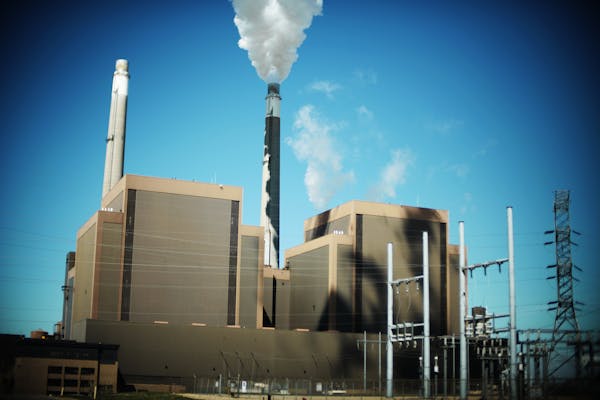Great River Energy now has a plan to make the electricity it sells 90% carbon-free by 2035.
The plan approved Thursday by the Minnesota Public Utilities Commission represents a major transition from the current energy mix of the coal-heavy Maple Grove-based cooperative, a wholesale electricity provider.
The cooperative estimated its power mix at the end of 2023 would be 35% carbon-free, with much of its energy coming from a massive coal-powered plant in North Dakota.
Great River provides electricity for roughly 1.7 million people through 27 mostly rural cooperatives, ranging from northeast Minnesota to the Iowa border.
At the heart of Great River's plan — which stretches until 2037 — is its relationship with Coal Creek Station, which it sold in 2022 to Rainbow Energy Center. Before the deal, Great River had planned to close the unprofitable plant. Instead, it struck a deal to buy from Rainbow much of the power Coal Creek produces. North Dakota officials viewed the potential closure as a big economic hit given the plant and an adjacent coal mine together employ hundreds of people.
Still, Great River plans to follow existing contracts that slash the amount of power it buys from Rainbow over time until its agreements expire in 2031. The plan approved Thursday would replace the power through buying energy from wind farms, and adding battery storage and solar plants.
While the Public Utilities Commission passed the plan unanimously, with support from trade unions and the Minnesota Department of Commerce, there were concerns raised.
The Sierra Club wanted Great River to also retire its Spiritwood Station coal and natural gas plant, also in North Dakota, and use tax breaks and other federal funding to invest in more clean energy to ensure a hard break from Rainbow.
In filings with the PUC, Sierra Club said the proposal was possible when accounting for tax breaks and other federal funding — like $970 million Great River could win through what's known as the New Era program.
Under state law, the PUC plays an advisory role on resource planning for cooperatives like Great River, giving it less oversight compared to private utilities like Xcel Energy. These utility plans cover 15 years but must be filed every few years.
The state Department of Commerce said in an August filing with the PUC that the cooperative had some financial risk from relying on purchases in the open energy market that can be expensive when energy demand is high. But the agency said it was generally fine with Great River's plan and that reserve power should theoretically provide enough cushion to shield its customers.
However, Commerce also noted Rainbow might be out of compliance with some federal rules including one tied to disposal of ash from the Coal Creek plant, which could pose risk to Great River and its customers.
PUC Commissioner Hwikwon Ham, an independent on the five-member board, said he had considered rejecting the energy plan because of those issues.
Instead, the commission directed Great River to check back in should any federal rule significantly impact Coal Creek and the energy it provides the utility.
Great River said in PUC filings that it owns and maintains $2.9 billion in assets, including nine power plants that run on gas, diesel, coal and fuel. The co-op also buys power from eight wind farms.
In November, the PUC approved a Great River plan to convert a natural gas plant in Cambridge to also run on fuel oil. The co-op said it could help deliver reliable and cheaper power during winter storms.
Commission Member Joseph Sullivan, a Democrat, said he "would feel a lot better about where the world is going" if every utility were slashing their carbon emissions by as much as Great River.
Eden Prairie refrigeration facility laying off 91 workers

